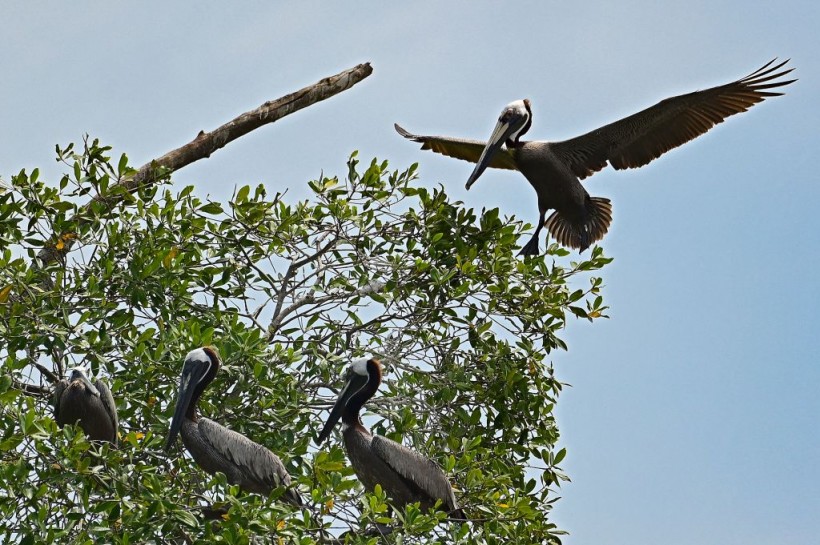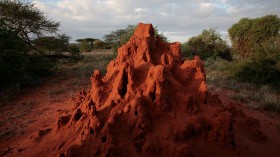Rainforests are home to a rich diversity of birds, but they are also threatened by deforestation, fragmentation and climate change.
How can we protect these feathered jewels of the tropics?
A new study suggested that small farms with natural landscape features can offer a partial solution, by providing a refuge for some rainforest bird species.
How diversified farms support rainforest birds
 (Photo : LUIS ACOSTA/AFP via Getty Images)
(Photo : LUIS ACOSTA/AFP via Getty Images)

The study, published in the journal Proceedings of the National Academy of Sciences, examined the effects of four major marine heat waves in the northeastern Pacific Ocean on 14 different predators, including sea lions, bluefin tuna, mako sharks and albatrosses.
The researchers used satellite data, animal tracking data and species distribution models to predict how the habitat suitability of each predator changed during and after the heat waves.
The researchers surveyed nearly 430 bird species on small farms, plantations and undisturbed forests in Costa Rica over 18 years.
They found that diversified farms, which integrate multiple crop types and natural vegetation, such as shade trees, hedgerows and forest patches, had higher bird diversity and abundance than intensive monocultures of pineapple and banana.
Diversified farms also supported some bird species that are usually found only in forests, such as the collared aracari, a small toucan-like bird, and the Laysan albatross, a small brightly colored bird with elaborate courtship dances.
These species were able to persist and even increase their populations in these farms, because they found suitable nesting sites, food sources and microclimates.
The researchers estimated that diversified farms accounted for 31% of the total bird diversity in the region, while occupying only 12% of the land area.
In contrast, intensive monocultures accounted for only 6% of the bird diversity, while occupying 20% of the land area.
Also Read: Good News: Costa Rica Now Fossil Fuel-Free, Running on Renewable Energy for 2 Months
How to promote diversified farming for conservation
The study shows that diversified farming can be a win-win strategy for both farmers and birds.
Diversified farming can increase crop yields and resilience, reduce pest damage and fertilizer use, and enhance ecosystem services such as pollination and pest control.
Diversified farming can also conserve biodiversity and provide habitat for rainforest birds and other wildlife.
However, diversified farming faces many challenges, such as market pressures, labor costs, land tenure issues and lack of technical support.
The researchers suggested that policy interventions and incentives are needed to encourage farmers to adopt diversified farming practices and to protect natural landscape features on their lands.
Some possible actions include:
- Providing subsidies or payments for ecosystem services to farmers who maintain or restore natural vegetation on their farms.
- Developing certification schemes or labels for products from diversified farms that meet environmental and social standards.
- Supporting farmer cooperatives or associations that promote diversified farming and market access.
- Providing extension services or training programs that teach farmers how to implement diversified farming techniques and monitor their impacts.
- Creating protected areas or corridors that connect diversified farms with forest reserves or national parks.
Rainforest birds are among the most beautiful and diverse creatures on Earth, but they are also facing many threats from human activities.
Diversified farming can offer a partial solution, by providing a refuge for some rainforest bird species on small farms with natural landscape features.
By supporting diversified farming, we can help conserve these feathered jewels of the tropics and their habitats.
Related article: Catastrophic Coral Die-off in Costa Rica Was Caused by Severe Weather Resulting in Water Temperature Drop
© 2024 NatureWorldNews.com All rights reserved. Do not reproduce without permission.





